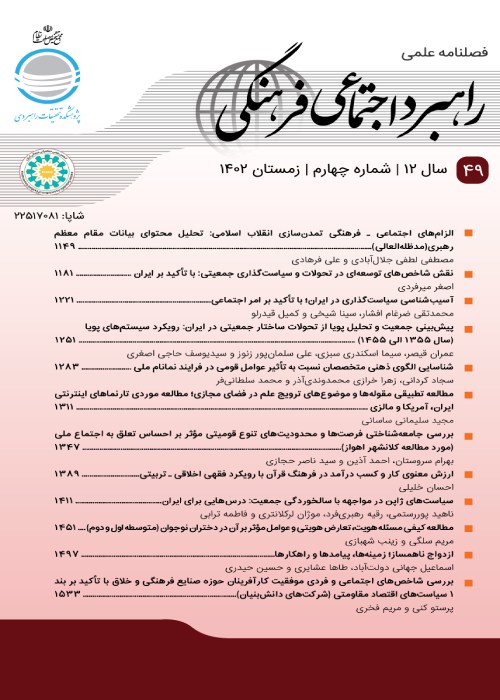Population Forecasting and Dynamic Analysis of Population Structure Changes in Iran: (1355 to 1455)
Author(s):
Article Type:
Research/Original Article (دارای رتبه معتبر)
Abstract:
Following the population control policy of international which was implemented in Iran in the last few decades, today has caused a huge change in the demographic age structure and has pushed the country's population towards an increase in the rate of old age. It has caused the dependency rate to be one of the basic challenges of policy makers in the future. Therefore, the current research has simulated the changes in the structure of the Iran's population during the years 1355 to 1455 by using dynamic systems modeling. The results of forecasting the structural changes of the population show that the country's population will reach 94132000 million people in 1426 with an average annual fertility rate of 1.6. After that, it started a downward trend and will reach 86416400 people in 1455. This is despite the fact that the elderly population will grow increasingly during this period; So that it will reach 29% of the total population. The results show that due to the unbalanced population growth of the country in three decades (60s, 50s and 70s) and the increase in life expectancy from 54 years to 76 years, in the coming decades the population structure of the country will be an aging structure and due to the increase in the rate of the dependence of the country's population will have harmful economic consequences.
Language:
Persian
Published:
فصلنامه راهبرد اجتماعی فرهنگی, Volume:12 Issue: 49, 2023
Pages:
1251 to 1282
https://www.magiran.com/p2702578
سامانه نویسندگان
مقالات دیگری از این نویسنده (گان)
-
Assessing business cycles in the industrial and agricultural sectors in the Iranian economy with policies on banking facilities
Fereydon Khosravi, *, Davoud Haghkhah, Ali Salmanpour, Rostam Ghara Daghei
Islamic Economics & Banking, -
The Effect of Institutions and Globalization on the Environmental Performance of Selected Developing Countries
Peyman Jahanfar, Abolfazl Shahabadi *,
Macroeconomics Research Letter, Spring 2025



